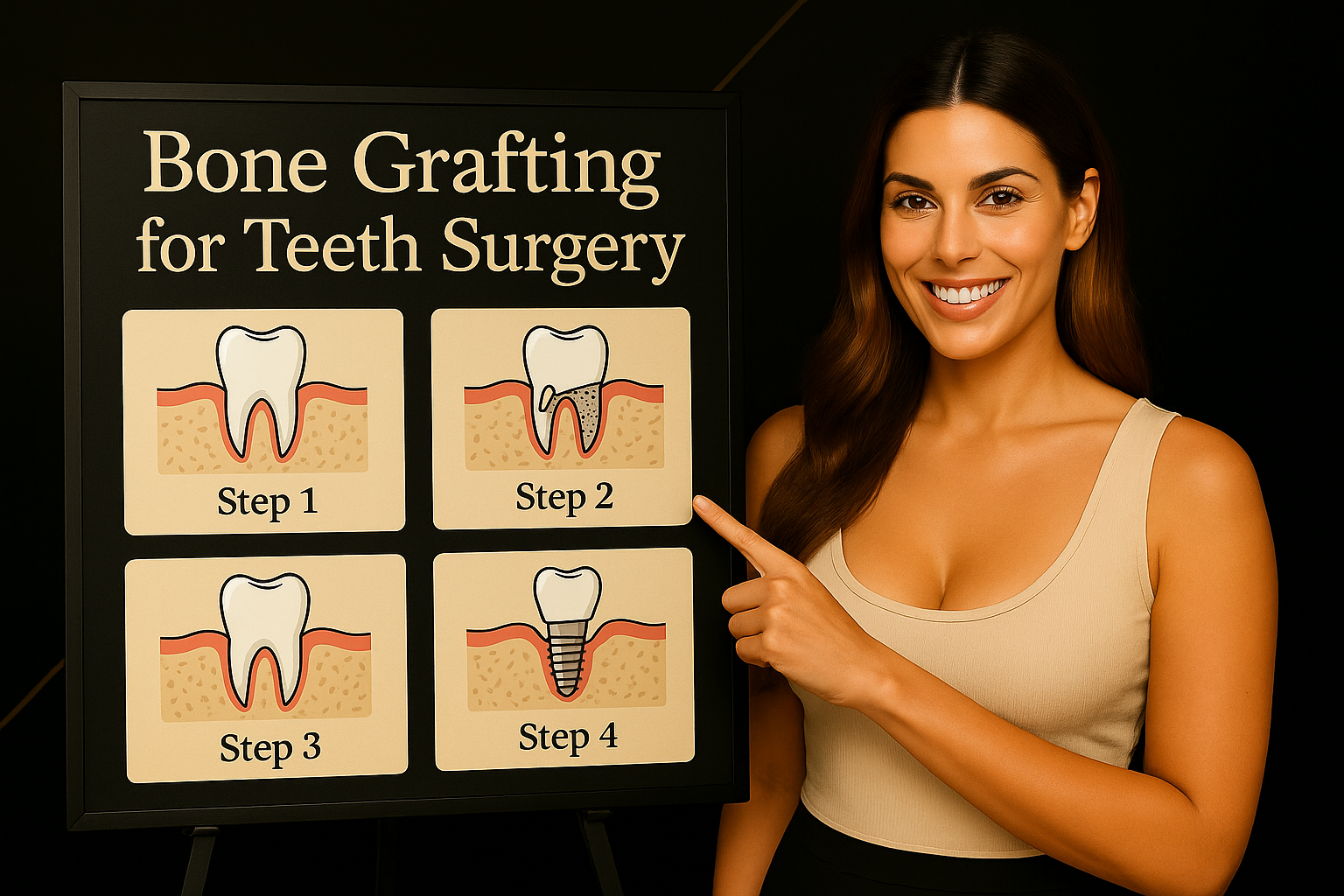Dental bone grafting plays a crucial role in restoring lost bone in the jaw for patients preparing for dental implants. If you have missing teeth, gum disease, or jawbone damage, you may need a bone graft to rebuild the structure and support long-term dental health. At Liverpool, our experts provide a smooth and comfortable bone grafting procedure tailored to your specific needs, ensuring long-lasting results and a healthier smile.
Why Do I Need a Bone Graft for My Tooth?
A bone graft may be necessary when your jawbone lacks the strength or density to support dental implants, bridges, or other restorative treatments. A weak jawbone not only affects your oral health but also impacts your appearance and confidence.
Several common causes include:
- Tooth loss – When a tooth has been missing for too long, the bone underneath begins to shrink, making future restoration difficult.
- Gum disease – Periodontal infections weaken and destroy the bone surrounding your teeth.
- Injury or accident – A strong hit to the mouth or jaw can fracture or damage bone and lead to bone loss over time.
Bone grafting is an important step that restores strength, improves facial aesthetics, and prevents further bone deterioration.
How Does a Dentist Perform a Bone Graft?
At Liverpool, your dentist may extract small amounts of bone from your jaw, hip, or tibia to use as a graft. However, in most cases, safe biocompatible materials from donor sources or synthetic options are used, eliminating the need for extra surgeries.
The process generally involves:
- Evaluating your oral condition with scans and X-rays.
- Selecting the most effective grafting material.
- Placing the graft in the deficient area.
- Protecting the graft with a special membrane to support healing.
This procedure is minimally invasive and designed to maximize comfort during your treatment.
Are Artificial Bones for Teeth Helpful?
Yes! Artificial bone grafting materials are highly effective in stimulating natural bone regeneration. They provide a framework for your body to rebuild bone tissue. Common types include:
| Type | Description |
|---|---|
| Autografts | Your own bone, offering the highest success rate. |
| Allografts | Donor bone, widely used and very safe. |
| Xenografts | Bone from animal sources, which helps stimulate growth. |
| Alloplasts | Synthetic bone-like materials, ideal for specific cases. |
Modern dentistry ensures these materials are safe, reliable, and thoroughly tested for long-term success in dental restorations.
How Is Bone Graft Replacement Done for Teeth?
The bone grafting procedure is relatively quick and is usually performed under local anesthesia or sedation. Here’s how it works:
- The affected area is cleaned and prepared.
- Bone graft material is carefully placed where needed.
- A protective membrane is applied to secure the graft.
- The area is left to heal naturally over the coming months.
Healing time varies, but most patients are ready for implants within 3 to 6 months after grafting, once the new bone has fully integrated.
What Dental Surgery Needs a Bone Graft?
Bone grafting is recommended for several dental procedures, such as:
- Dental implants – To ensure implants are stable and durable.
- Tooth extractions – To prevent bone loss immediately after removal.
- Periodontal treatments – To restore bone destroyed by gum disease.
- Jawbone reconstruction – To repair trauma, infections, or congenital defects.
Without a bone graft, many restorative treatments may not be possible or may fail prematurely.
Conclusion
Bone grafting is a game-changer for patients who need implants or jawbone restoration. It strengthens the foundation of your teeth, improves aesthetics, and prevents long-term complications. At Liverpool, our experts use advanced technology and gentle techniques to provide the safest and most effective bone grafting procedures.
Book a consultation with us today and take the first step toward restoring your smile, health, and confidence with the right bone grafting treatment!
